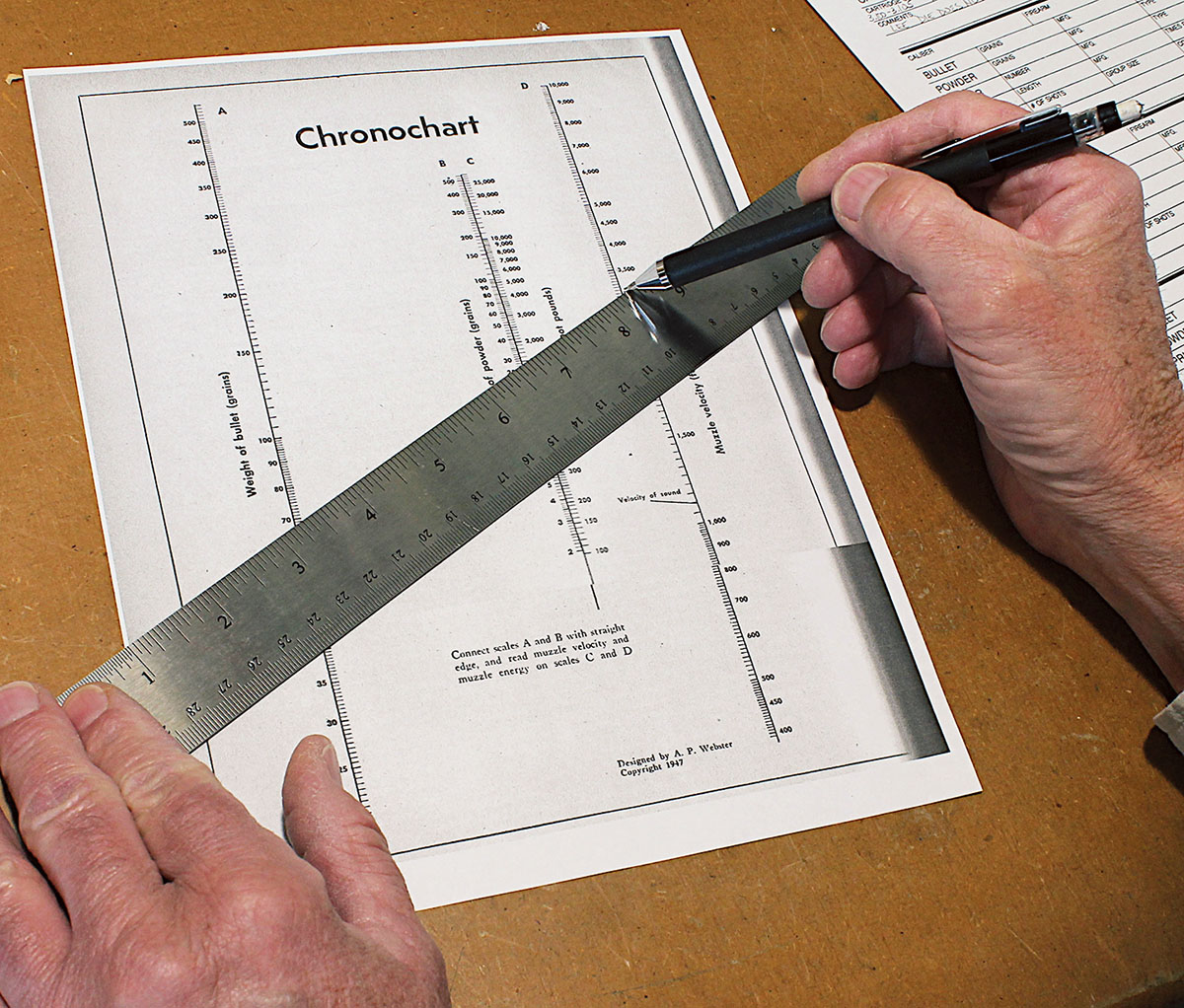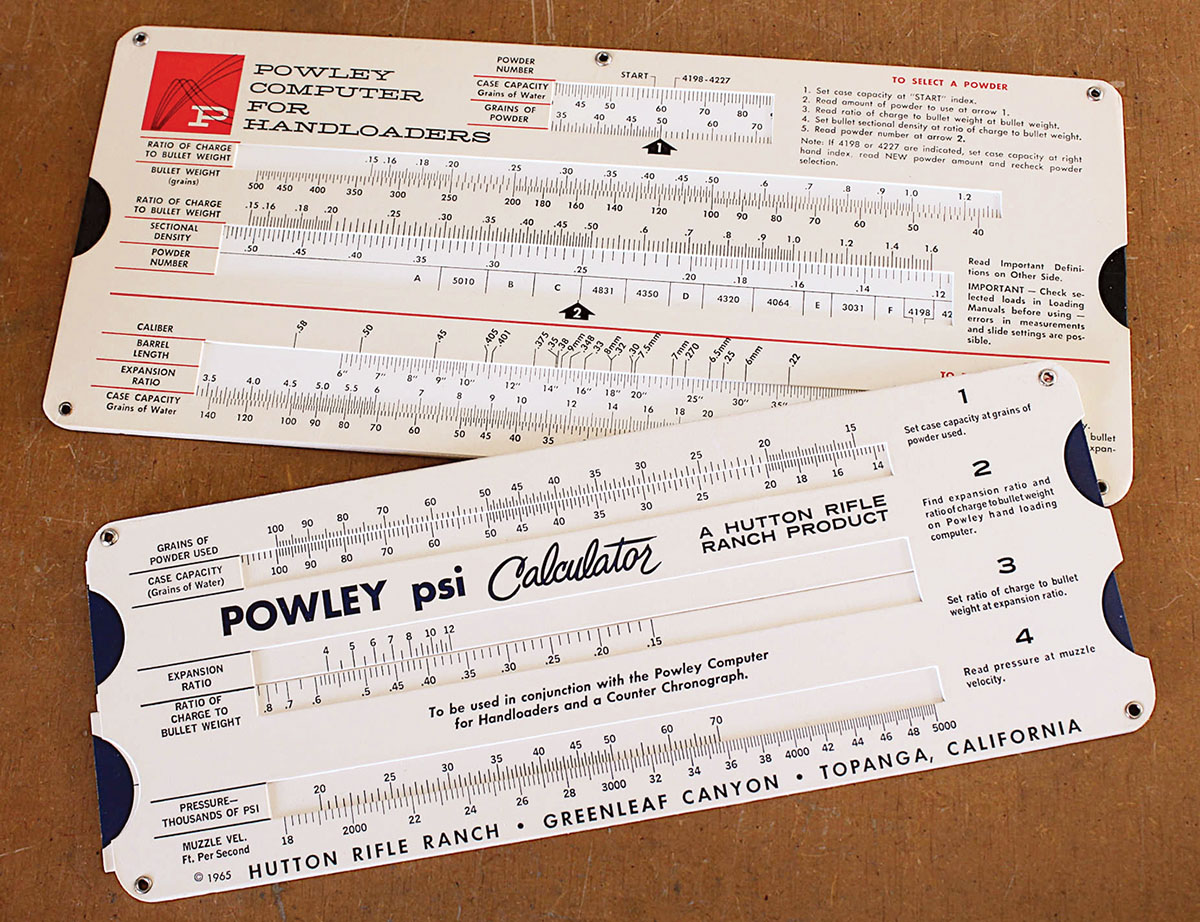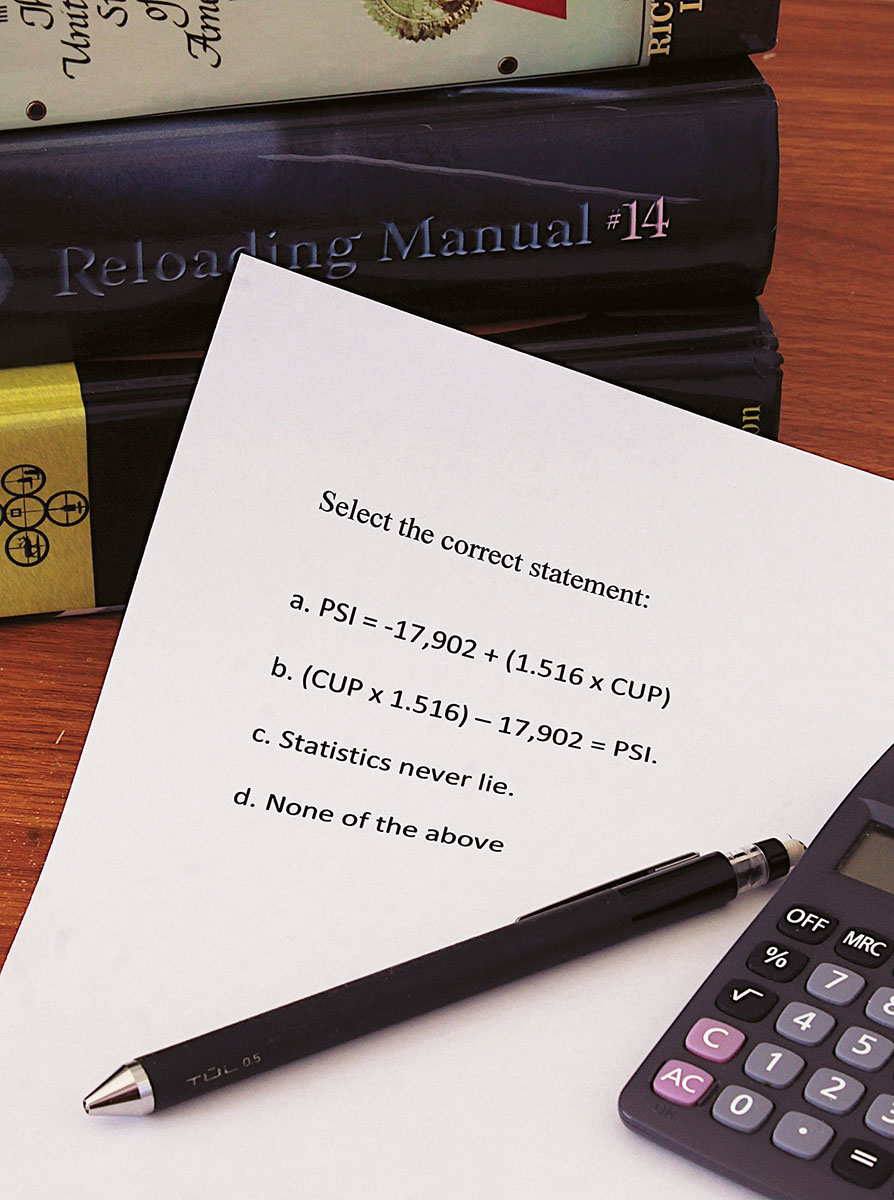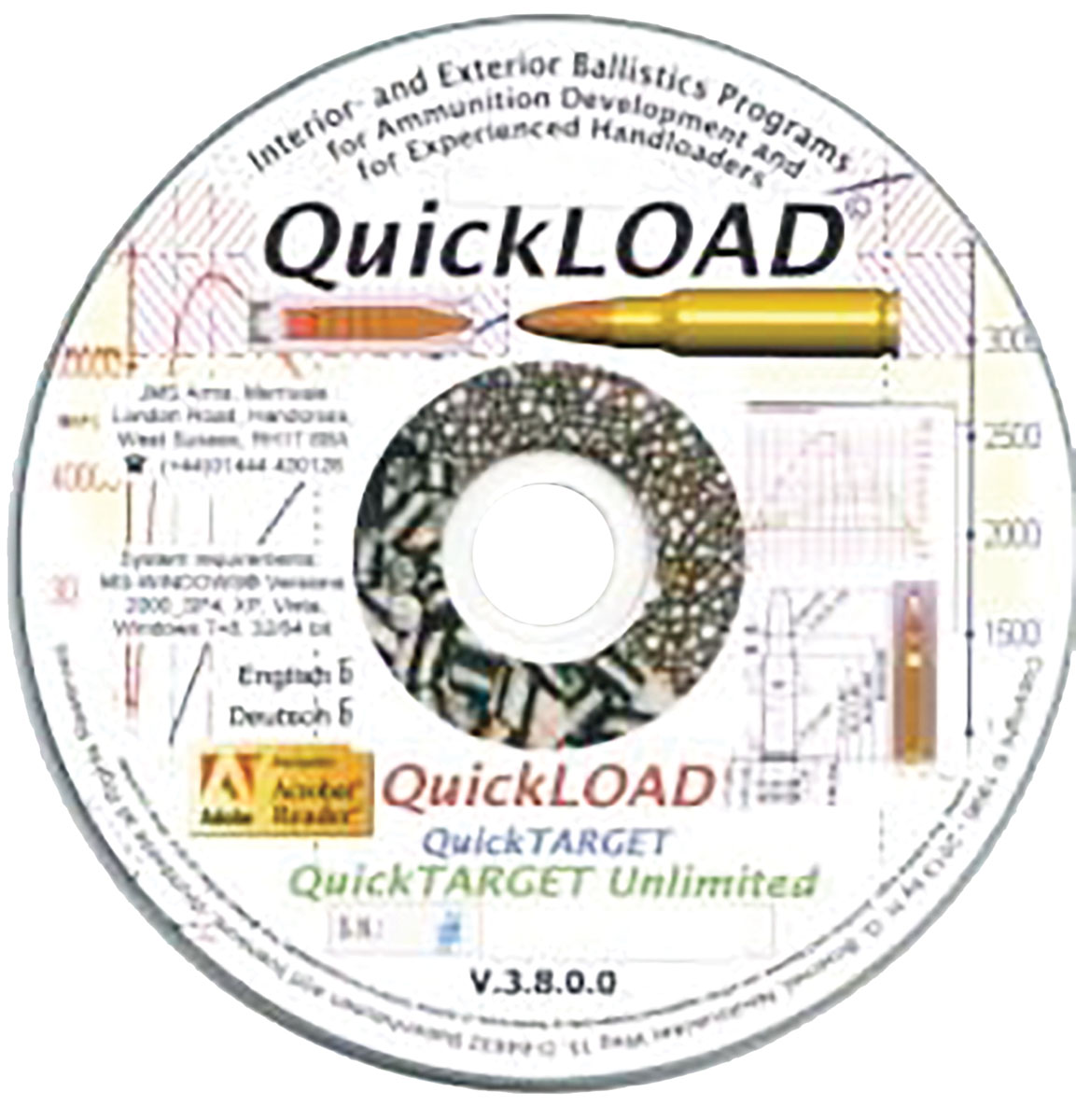From the Bench
Convert CUP to Transducer PSI? Yes and No, Mostly No.
column By: Art Merrill | April, 25

The following is probably a bit nerdy for the typical handloader and, admittedly, of no practical use at the reloading bench. Practicality aside, however, you may find it useful for dropping a factoid in your next discussion with a fellow handloader on the matter of copper units of pressure (CUP) vs. transducer pounds per square inch (psi) cartridge pressure data.
As a wordsmith, my sense of humor is often subtle, and one of my favorite quips is to flatly declare to a listener, “There are no absolutes.” That, of course, is an absolute statement, making it an oxymoron, which is why it amuses me. In handloading, however, we do have some absolutes when it comes to safety.

One absolute we’ve always heard is that there is no correlation between CUP and piezoelectric or transducer psi. There is no direct relationship between the two, as we would see, for example, in holding the scales of Fahrenheit and Centigrade thermometers side by side. We also know that, though there is a formula to convert between Fahrenheit and Centigrade, there is no formula for converting between CUP and transducer psi – you might as well try to convert either to miles per hour instead. While the former may be true, it appears the latter absolute may not be so absolute after all. To back up a step, let’s review the pressure measurement methods we’re discussing as handloaders.
Throughout much of the 20th Century, the method for determining cartridge chamber pressures was to drill a hole into the chamber of the test barrel so that expanding gasses from the fired cartridge pushed a piston fitted to the hole that, in turn, crushed a tiny copper pellet. The length of the crushed pellet was then measured. This CUP measurement is indirect and, compared to the piezoelectric crystal used in the transducer method, imprecise.

A piezoelectric crystal is one that produces an electrical charge when subjected to pressure – the higher the pressure, the greater the crystal’s electrical output. An example is the piezoelectric igniter on your gas grill or stove, which is basically “dumb” compared to a “smart” one used in electronic measurement. The piezoelectric principle was applied to measuring cartridge pressures utilizing a transducer beginning in the 1960s. It was found to be superior to the CUP method, both in rendering a direct, precise measurement and measuring the time component that allows the graphing of a pressure curve, whereas the CUP method indicates only peak pressure.
In the U.S., the Sporting Arms and Ammunition Manufacturers Institute (SAAMI), established in 1926, sets pressure limits for cartridges. A separate organization in Europe, the Permanent International Commission for the Testing of Small Arms (CIP), established in 1969, sets those standards across the pond. For decades, SAAMI standardized cartridge pressures with the CUP method before switching to the piezoelectric/transducer method. CIP’s transducer-only method standards are in metric bars (atmospheres), roughly convertible to psi by multiplying bars by 14.50377.
To further complicate matters, even though both organizations utilize piezoelectric transducers to establish maximum average peak pressure (MAP) for a cartridge, their methodologies differ. CIP drills a hole in the cartridge case to allow the expanding gases to directly impinge on the transducer, whereas SAAMI inserts a conformal transducer between the case and the chamber wall to measure the pressure the expanding case exerts on the transducer. The different methodologies result in recording somewhat different pressures for the same cartridge.
For the average handloader who adheres strictly to published load tables, none of the foregoing is a problem. For the curious, the experimenter and the dabbler in recreating long-gone cartridges, to quote the inscription at the base of the Faber College statue in the movie Animal House, “Knowledge Is Good.” To that end and to get (finally) to the point, it appears that there may be a formula for converting between CUP and transducer psi, though it does not work across the board for all cartridges. About 20 years ago, a handloader with a knack for numbers discovered an unexpected statistical correlation between CUP and transducer psi measurements, and he came up with a simple formula to convert CUP to transducer psi, which is:
psi = -17,902 + (1.516 x CUP)
If your calculator doesn’t manipulate negative numbers, you can transpose thusly:
(CUP x 1.516) – 17,902 = psi
Here, of course, “psi” refers to transducer psi.
But does it work? Yes and no. Let’s take the 30-06 as an example. According to SAAMI, MAP for the 30-06 Springfield cartridge is 50,000 CUP and 60,000 psi. Plugging 50,000 CUP into the above formula results in 57,898 psi – close enough to and on the safe side of 60,000 psi. Now let’s do the 223 Remington, with a standard of 52,000 CUP:
(52,000 CUP x 1.516) = 78,832
78,832 – 17,902 = 60,930psi

SAAMI transducer MAP for the 223 Remington is actually 55,000 psi, so the formula’s difference of nearly 6,000 psi is way off the mark and potentially hazardous to rifle, shooter and standers-by. The formula’s author, Denton Bramwell, wrote in his 2002 article that the formula correlates to within 3,000 psi for about two-thirds of all rifle cartridges but doesn’t work for a number of “statistically peculiar” rifle cartridges, like the 223 Remington. It also doesn’t work at all for pistol cartridges or shotshells.
Given such an inconsistency, the conversion formula is only a statistical curiosity and definitely not a tool to be used at the handloading bench. It bears emphasizing that it is potentially hazardous to apply the formula in handloading experiments as demonstrated by the 223 Remington overpressure disparity – the information is presented here only as campfire conversation of interest to handloaders.
Lacking reliable, published load data, we may utilize a still-viable slipstick Powley computer, a Commander Webster’s Chronochart (American Rifleman, May, 1948), the theoretical calculations of software like QuickLoad or the intuition that comes with experience along with a chronograph – always adding a hefty dash of caution – to determine a safe starting place in our load development.


